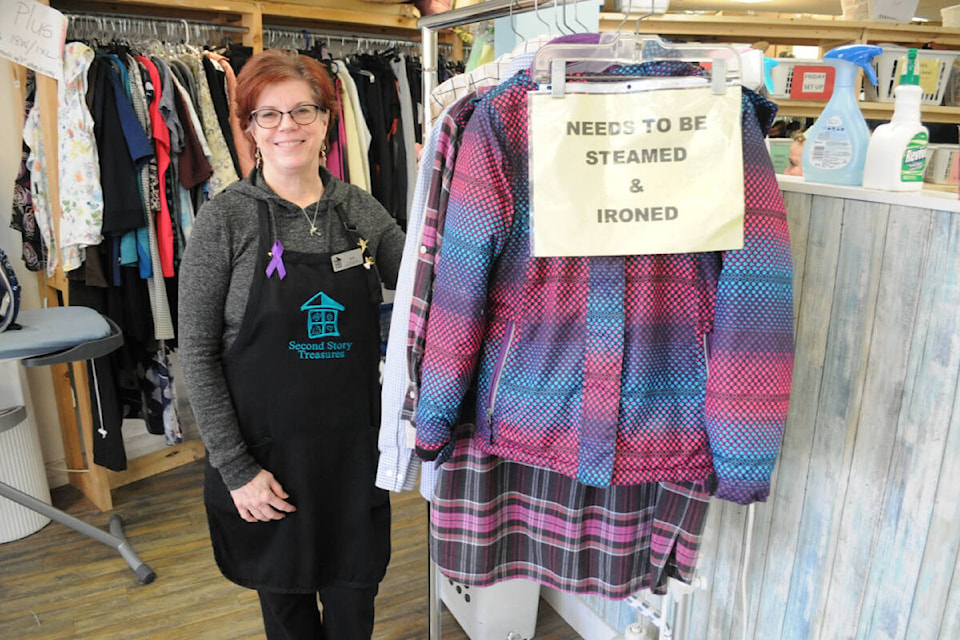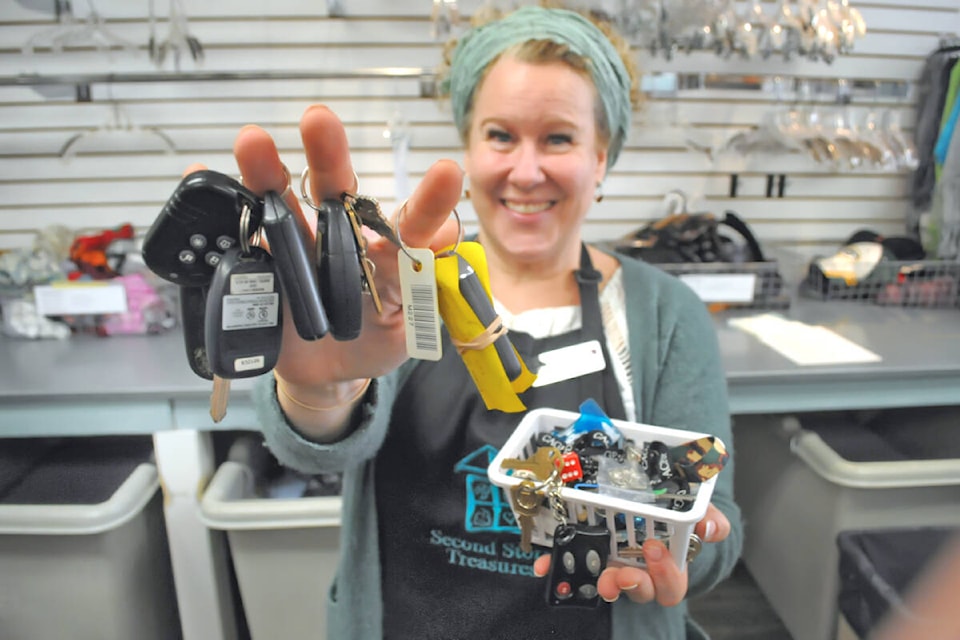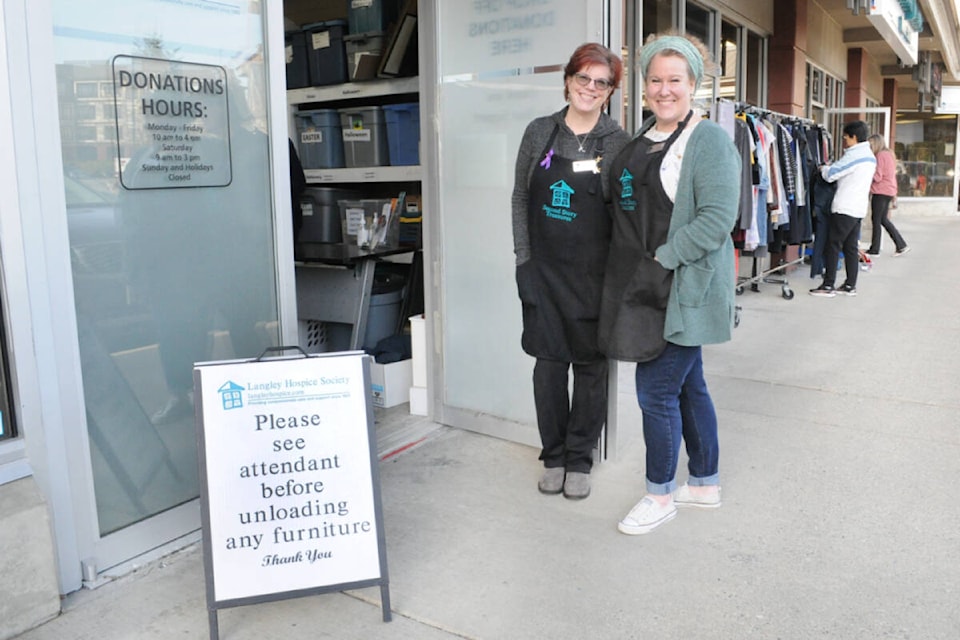Most people have too much stuff, and know the value to their mental and physical health, of decluttering. But the process it not as easy for people as they age.
First thereŌĆÖs just the nature of aging and the ability to lift, carry, sort, trash, or donate items. The stamina level just isnŌĆÖt the same.
Then thereŌĆÖs the emotional issues that affect peopleŌĆÖs perceptions of their possessions.
Fraser Health psychiatrist Dr. Marietta Van Den Berg said clutter can affect stress and anxiety levels, as well as productivity. It can influence the ability to focus and may trigger coping and avoidance behaviours.
ŌĆ£Think about how hard it is to concentrate when you are in a noisy mall or restaurant, how draining it is,ŌĆØ said Dr. Van Den Berg. ŌĆ£Visual stimuli and the physical environment also drain cognitive resources.ŌĆØ
There are some common types of clutter and different ways to deal with it.
Waste clutter
No one wants to contribute to landfills. Sell, donate, or toss items, and take time to think about the feelings this brings up to make better decisions when buying more stuff in the future.
Aspirational clutter
This includes keeping clothes with the intention to lose weight, and the craft and hobby supplies that we will use when we have more time. This represents our past selves and our future selves, not our present reality.
Progress clutter
ItŌĆÖs all the projects that are ŌĆśin progress.ŌĆÖ Commit to the ones you care about and get rid of the rest. Close the gap, schedule the task and complete it, or have an ŌĆśin-progressŌĆÖ basket that you keep out of the way.
Sentimental clutter
Decide how many useless things holding sentimental value you can accommodate without them becoming clutter. For example, perhaps allocate one bankerŌĆÖs box per child for elementary artwork, school reports, and year books. Find a way to hold onto the memory, not the item.
Offer larger items, like furniture, to family members, or repurpose them to fit your current needs.
ŌĆ£This includes the gifted and inherited stuff that you may hate but feel obliged to keep,ŌĆØthe doctor commented. ŌĆ£I have that ŌĆō a whole house full of antique furniture where nothing matches ŌĆō in case my children want it someday. I intend to have two antique chairs sanded, painted white and distressedŌĆ” I feel if I must bear the burden of ownership at least I can do it in a manner that looks pretty to me and works for me.ŌĆØ
I-might-need-this clutter
Keeping something because you might need it is centred on fear of not having something when it is needed, fear of regret and fear of not being able to afford or find the item in the future. It represents a fear of loss of control of future possible needs.
Ask yourself: When did I last use it? If not in six months, you probably do not need it. If you decide to keep an item, remember it is a trade-off of the cost of your time, space, and attention against a possible future need.
Disposal
Most people assume they will box up the clutter and drop it at the nearest thrift store.
But thereŌĆÖs more to consider. Thrift stores, such as Second Story Treasures in Walnut Grove, canŌĆÖt take huge donations all at once.
ŌĆ£We are running with volunteers, with an age range from 15 to 96. So when we do get a great big load, some of our resources are taxed,ŌĆØ said co-manager Kim Glover.
Thrift stores ask that people donŌĆÖt drop off stuff when they are closed, as items tend to be rummaged through, resulting in damage and increased amounts that simply have to be landfilled.
.
ŌĆó READ MORE: The Seniors Directory is a roundup of great information for residents
ŌĆó READ MORE: Rail history signs go up in 91įŁ┤┤ City
.
As well, each thrift store has items they canŌĆÖt take. Second Story Treasures, which raises money for the 91įŁ┤┤ Hospice Society, has a cadre of 120 volunteers (and three part-time staff) who sort, clean, and stock donations.
ŌĆ£It does take us a little bit extra time and resources to dispose of things or recycle things or repair things, if we need to,ŌĆØ Glover explained.
But items that havenŌĆÖt been laundered, are incomplete, or are damaged, cost volunteer time and charity money for disposal. The shopŌĆÖs website has the list of items it cannot accept, ranging from playpens and stuffies to used water bottles and filing cabinets. And of course expired items, open cosmetics and toiletries, and such are not sell-able.
The store works with other thrift stores, secondhand stores, community agencies, animal welfare groups, and recyclers to move items it canŌĆÖt use to groups that can, added Rita Tateyama, the storeŌĆÖs other co-manager.
Donors are asked to contact the store to discuss what they are offering.
ŌĆ£Often we ask them not to bring it all at once because our storage is limitedŌĆ” we take furniture but we need pictures first,ŌĆØ Tateyama said.
She urged people to sort through the items before donating because there can be valuables. They have had expensive jewelry, cash, passports, and more in bundles of goods and since they are dropped off, they have no way of knowing who donated.
ŌĆ£So if youŌĆÖre assisting a senior, make sure that youŌĆÖre checking all those little secret hiding spots,ŌĆØ Tateyama added.
.





